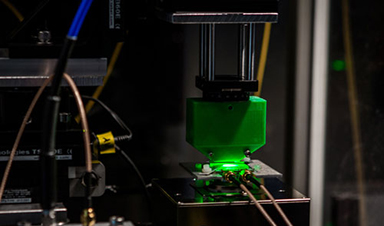Determining the exact configuration of proteins and other complex biological molecules is an important step toward understanding their functions, including how they bind with receptors in the body. But such imaging is difficult to do. It usually requires the molecules to be crystallized first so that X-ray diffraction techniques can be applied — and not all such molecules can be crystallized.
Now, a new method developed by researchers at MIT could lead to a way of producing high-resolution images of individual biomolecules without requiring crystallization, and it could even allow zoomed-in imaging of specific sites within the molecules. The technique could also be applied to imaging other kinds of materials, including two-dimensional materials and nanoparticles.
[button link=”http://www.nanowerk.com/nanotechnology-news/newsid=45852.php” color=”custom” size=”medium” stretch=”” type=”flat” shape=”pill” target=”_blank” title=”” gradient_colors=”|” gradient_hover_colors=”|” accent_color=”” accent_hover_color=”” bevel_color=”” border_width=”1px” icon=”” icon_divider=”yes” icon_position=”left” modal=”” animation_type=”0″ animation_direction=”down” animation_speed=”0.1″ animation_offset=”” alignment=”left” class=”” id=””]Read more[/button]![]()
Image Credit: Nathan Fiske
[title size=”2″ content_align=”left” style_type=”single solid” sep_color=”” margin_top=”” margin_bottom=”” class=”” id=””]Recent News[/title][recent_posts layout=”default” hover_type=”zoomin” columns=”3″ number_posts=”120″ offset=”” cat_slug=”News” exclude_cats=”” thumbnail=”yes” title=”yes” meta=”yes” excerpt=”yes” excerpt_length=”30″ strip_html=”yes” animation_type=”0″ animation_direction=”down” animation_speed=”1″ animation_offset=”” class=”” id=””][/recent_posts]






Leave A Comment